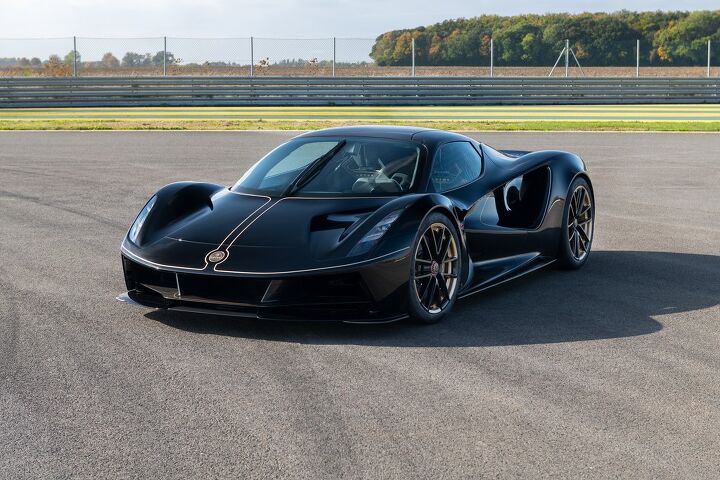
Lotus has reported a net loss of £594 million (about $751 million USD) for 2023. However the company actually had a good sales year, moving 6,970 vehicles in a twelve-month period. Lotus noted that sales ramped up in the final quarter of 2023, with the company seeing a 110-percent increase after the launch of the Lotus Eletre SUV. Though getting that vehicle, and other upcoming electric models, into production are one of the primary reasons for its crash burn.
Lotus is now in a situation where its new model looks poised to boost sales through 2024. But also has to recoup its investments into electrification, which should be aided by the upcoming launch of the all-electric Emeya grand tourer. Those models join the Emira sports coupe and Evija hypercar — the latter of which is so expensive and rare that you’ll probably never see one in the flesh.

Considering how well the Eletre SUV has performed thus far, there’s reason to back Lotus’ optimism for 2024. The real question is whether or not sales are sustainable beyond that. Despite corners of the world asserting forthcoming bans on combustion vehicles, EVs remain niche products catering to a very specific clientele. The good news for Lotus is that wealthy people seeking high-performance vehicles are a well-represented portion of that group.
The brand has long struggled to remain profitable. Historically British, the brand has an extremely rich heritage that failed to keep it from exchanging hands. General Motors purchased Lotus in 1986 and the company continued building lightweight sports cars. But the company eventually got stuck building countless variants of the Elise and Exige — which were already extremely similar automobiles.

China’s Geely bought a controlling stake in the company in 2017, with the remaining shares going to the holding company of Proton’s major shareholder Syed Mokhtar Albukhary. Initially, it wasn’t clear what the plan for Lotus would be. However, Geely announced a joint venture with Renault–Nissan–Mitsubishi Alliance and their Alpine performance division to build all-electric sports cars. That statement came in 2021 and was quickly followed by another confirming that billions would be invested into Lotus for the cause. It was to become an all-electric brand shooting for higher volumes.
Adding heavy batteries does seem to undermine Lotus founder Colin Chapman’s engineering maxim of “Simplify, then add lightness.” But Lotus had said that will remain an essential part of future designs.

Financial troubles aside, Lotus has stated that it’s right on track for its “Vision80 strategy.” The plan is to develop vehicles below the $80,000 threshold, broaden the model lineup, focus on electric vehicles, and average at least 150,000 units sold annually by 2028. It has quite a way to from achieving its sales goal. But the early numbers we are seeing from the Eletre launch is somewhat heartening.
Don’t like it? It might not even matter. While Lotus CEO Feng Qingfeng has stated that he wants the company to remain a globally recognized nameplate, he expects the brunt of future sales to stem from China. While the company is technically still British, with its headquarters based in Norfolk (specifically Hethel), its newest models are being produced in China and leadership clearly sees the region as its biggest market moving forward.

[Images: Lotus]
Become a TTAC insider. Get the latest news, features, TTAC takes, and everything else that gets to the truth about cars first by subscribing to our newsletter.

